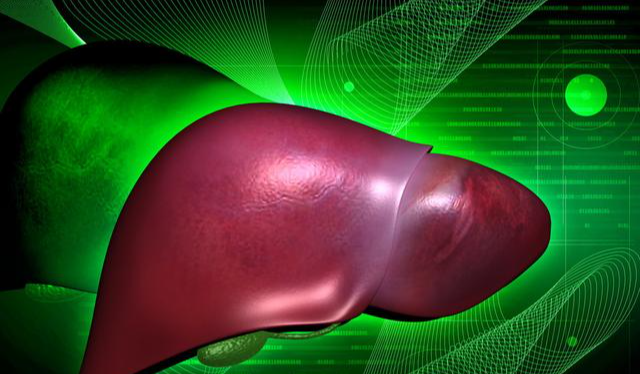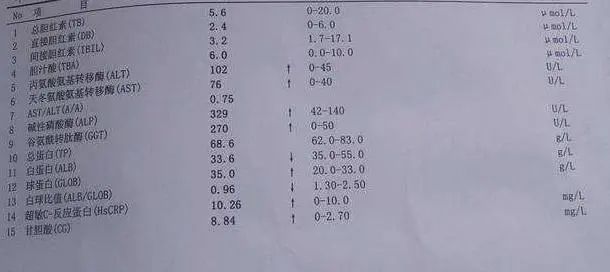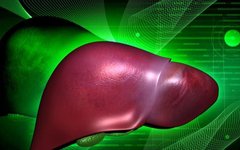Qi stagnation leads to blood stasis, and blood stasis causes a hundred diseases!
People consume grains and cereals, working from sunrise to sunset. Nowadays, people’s diets are primarily meat-based, coupled with high work pressure, late nights, drinking, and smoking, which induce a constitution of Qi stagnation and blood stasis.
Modern medicine refers to this as “sub-health,” while Traditional Chinese Medicine (TCM) explains that when the Qi and blood of the five organs and six bowels are not smooth, and the liver and gallbladder fail to disperse, it results in a constitution of liver Qi stagnation and blood stasis.
In TCM, the liver is responsible for the smooth flow of Qi. Liver Qi stagnation occurs when the liver’s ability to disperse is impaired, leading to metabolic disturbances and a series of symptoms.

What are the symptoms of liver Qi stagnation?
1. The first symptom is insomnia with vivid dreams, characterized by poor sleep quality, frequent awakenings from dreams, rough skin, and the appearance of spots.
2. Liver Qi stagnation can lead to headaches and dizziness. Emotional fluctuations disturb the mind and nerves, causing headaches and irritability.

3. When liver Qi is not smooth, it can lead to diseases. The liver meridian runs along the sides of the body, and prolonged stagnation may induce conditions such as breast hyperplasia, breast nodules, or even breast cancer.
4. Stagnation of liver Qi can lead to a lack of appetite and lethargy, as the liver’s slow metabolism results in weakness in the limbs, which can lead to obesity and constipation.
5. In women, liver Qi stagnation can cause shortened menstrual periods, reduced menstrual flow, dizziness during menstruation, and insomnia during the menstrual cycle.

What diseases can long-term liver Qi stagnation induce?
1. Stomach Pain
Cause: Liver Qi stagnation fails to disperse, invading the spleen and stomach, leading to disharmony between the liver and stomach or liver and spleen, causing Qi and blood stagnation that results in stomach pain.
Symptoms: Pain in the stomach area, radiating to the sides, worsening with emotional distress, loss of appetite, poor sleep, thin white tongue coating, and wiry pulse.

2. Abdominal Pain
Cause: Long-term depression and anger lead to liver Qi stagnation, causing Qi stagnation and pain; or worry injures the spleen, or liver Qi stagnation harms the spleen, leading to disharmony between the liver and stomach, Qi stagnation, and blood stasis in the abdomen, resulting in abdominal pain.
Symptoms: Abdominal pain, bloating, pain without a fixed location, often radiating to the lower abdomen, intermittent, relieved by belching.

3. Constipation
Cause: Low mood and liver Qi stagnation lead to a failure in regulation, resulting in constipation.
Symptoms: Hard stools, difficulty in passing, abdominal fullness, accompanied by fullness in the chest and sides, belching, loss of appetite, bowel sounds, and discomfort after defecation.

4. Goiter
Cause: Long-term anger and unresolved depression lead to stagnation of Qi in the heart and liver, preventing the liver wood from fulfilling its dispersing nature, resulting in Qi stagnation forming a goiter, or Qi stagnation and phlegm accumulation blocking the neck, forming goiter.
Symptoms: Swelling in the neck area, soft and painless, but with a feeling of swelling in the neck, chest tightness, tendency to sigh, or pain radiating to the sides, with symptoms fluctuating with emotions.

How to regulate liver Qi stagnation?
1. Hydration
Water is crucial for the human body. Maintaining adequate hydration is essential for stabilizing the internal environment and nourishing the liver.
Additionally, one can soak some herbs beneficial for liver health in water, such as: Citron (Xiangyuan), Rose (Meiguihua), Dried Tangerine Peel (Chenpi), Goji Berries (Gouqizi), Mulberries (Sangshen), Peach Kernels (Taoren), and Mint (Bohe).
Goji Five Harmony Tea is regarded as a premium liver tonic, promoting liver Qi, relieving stagnation, clearing heat, calming the mind, and enhancing liver function.
Drinking one or two cups of Goji Five Harmony Tea daily can significantly improve liver health.
2. Regulating Sleep Schedule
Individuals with liver Qi stagnation should adjust their sleep schedule and develop good habits, avoiding prolonged late nights and ensuring adequate sleep.

3. Emotional Regulation
It is important to manage emotions. When liver Qi fails to disperse, Qi stagnation leads to emotional depression; prolonged stagnation results in irritability.
Thus, patients with liver Qi stagnation should focus on emotional regulation. Maintaining a balanced emotional state can gradually alleviate liver Qi stagnation, potentially eliminating the need for medication.

4. Dietary Regulation
For patients with liver Qi stagnation, it is advisable to consume foods that promote liver Qi, reduce liver heat, and strengthen the spleen, such as:
Pumpkin, oranges, lentils, sorghum, and barley for strengthening the spleen and Qi;
Daylily (Jinzhencai), rapeseed (Youcai), loofah (Sigua), and hawthorn (Shanzha) for reducing liver heat;
Garland Chrysanthemum (Tonghao), radishes (Luobo), pomelos (Youzi), and tomatoes (Xihongshi) for promoting liver Qi.

Tests and Examinations for Liver Qi Stagnation
If liver Qi stagnation persists for more than two weeks without improvement from TCM treatment, it is essential to seek medical examination. Although liver Qi stagnation is not a severe condition, it is considered the “source of a hundred diseases.”
Therefore, regular check-ups are necessary. What tests should be conducted at the hospital?
1. Liver Function Tests
Liver function tests are crucial for assessing whether there is liver cell necrosis or inflammation, with transaminases being a key indicator. Treatment should be guided by liver function results.

2. Liver Biopsy
Liver biopsy is valuable for diagnosing various types of hepatitis. Through liver tissue electron microscopy, immunohistochemical testing, and the Knodell HAI scoring system, accurate data on the etiology, inflammation activity, and fibrosis degree of chronic hepatitis can be obtained, aiding clinical diagnosis and differential diagnosis.

3. Jaundice Index and Bilirubin Quantitative Tests
In jaundice-type hepatitis, the above indicators may be elevated. Urine tests may show increased bilirubin, urobilinogen, and bilirubin levels.

